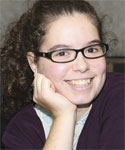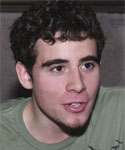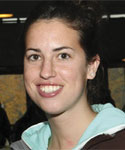|
‚ÄúH¬ĢĽ≠ provides a very comfortable environment to learn in,‚ÄĚ he says. ‚ÄúThe thing about H¬ĢĽ≠ is that there are a lot of resources available to help you out.‚ÄĚ
With the end of term evaluations approaching for our students, it seems appropriate that H¬ĢĽ≠ is also under the magnifying glass‚ÄĒit‚Äôs survey season for universities.
In particular, one recently released report provides an assessment of the university‚Äôs contributions to academic success. The National Survey of Student Engagement (or NSSE) operates from Indiana University‚Äôs Centre for Post-secondary Research. More than 47,000 students across North America were asked to describe their involvement in activities that are known to contribute to a successful university experience‚ÄĒsuch as discussions with professors, class preparation time and service learning.
‚ÄúEducation is a partnership and research shows us that greater student engagement contributes to learning and personal development,‚ÄĚ says Ms. Lane.
In terms of NSSE, H¬ĢĽ≠‚Äôs most meaningful comparators are the Canadian schools commonly described as the ‚ÄúG-13,‚ÄĚ or the research intensive schools across the country.
‚ÄĚWe compare favorably on most dimensions and, in many, even slightly better than the G-13 group,‚ÄĚ says Elizabeth Lane, H¬ĢĽ≠‚Äôs director of Institutional Analysis and Research.
We‚Äôre strongest in the category of student-faculty interaction, building on our leadership in the student to faculty ratio ‚Äď at 14:1, it remains one of the best nationally.
This finding is echoed in another current survey of Canadian undergraduate students, the Canadian University Survey Consortium, which noted a high level of satisfaction with H¬ĢĽ≠‚Äôs study skills and learning support services, free-wheeling class discussions, access to professors and intellectually stimulating learning environment.
Finally, the November issue of Maclean‚Äôs reinforces H¬ĢĽ≠‚Äôs best-in-Canada student to faculty ratio and national leadership in providing scholarships and financial assistance to our students.
Prompted by the buzz about various surveys, Dalnews student reporter Michelle Hampson asked some current students about their experiences.
‚ÄĚI‚Äôm in the chemistry program here at Dal. I‚Äôm really impressed that they wrote their own textbook. The program is set up really well. If you need help, they are there and willing to help you. You can go to the Resource Centre in the Dunn Building or the Concept Room in the Chemistry Building,‚ÄĚ says Keir Forgie, first-year science student. ‚ÄúThe teachers are really helpful. If you need to talk to them, they‚Äôll make time.‚ÄĚ
Vanessa Smit, a third-year recreation management student finds her class sizes beneficial. ‚ÄúMy professors know me, they know my name. I‚Äôm not just a number.‚ÄĚ
The results of the 2008 NSSE report will be shared among the university community, with a view toward continuing improvement in the student experience. To see more details, visit: Reports and Data/
‚ÄĚWe note the steady progress and that‚Äôs both significant and encouraging, but we‚Äôre still not where we want and intend to be,‚ÄĚ says President Tom Traves.



